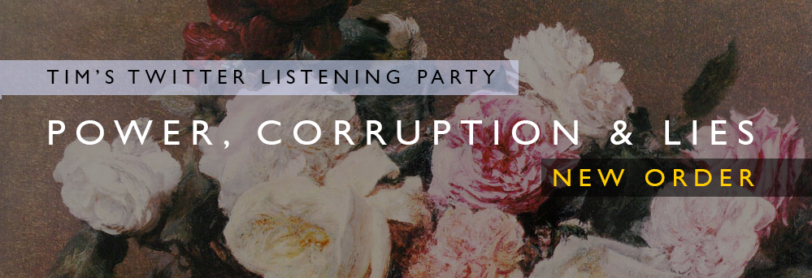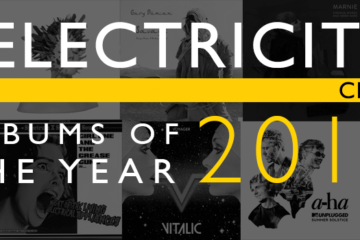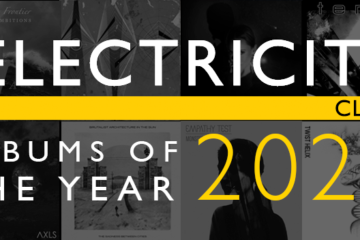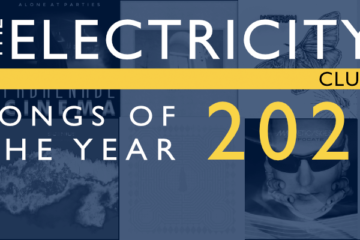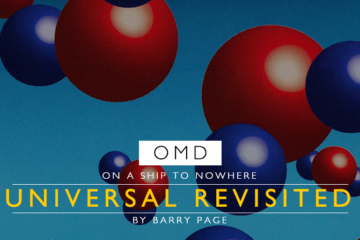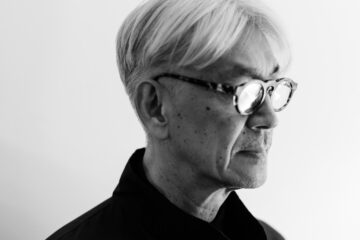I heard you calling
During a turbulent time for the music industry, Tim Burgess seems an unlikely herald for bringing people together over the love of albums. Better known for his involvement with rock outfit The Charlatans, Burgess has been carving out a career as a solo artist in recent years (including new album I Love The New Sky).
His concept of the listening party stems from a desire to connect with people through the power of music. “I wanted to do something that I thought would be helpful, or make me feel a bit helpful” commented Burgess in a recent BBC interview.
As a result, his listening parties draw in an audience on Twitter to listen to an album in real time. Typically, members of the bands or artists responsible for the album will also chime in with stories of the record’s production. His remit is also very broad, taking in everyone from Pulp to The Chemical Brothers; from Oasis to Slowdive.

New Order appear to be as good a choice as any, particularly on the back of their classic 1983 album Power, Corruption & Lies (an album also augmented by the standalone single release of ‘Blue Monday’).
Power, Corruption & Lies was New Order’s second album following their 1981 post-Joy Division effort Movement. It leant more heavily into electronic instrumentation, particularly with the introduction of the Emulator 1 (one of the more popular digital sampling synthesisers of its era).
For this New Order-themed listening party, a variety of voices associated with the band and the Factory scene added their input. This included legendary drummer Stephen Morris, Gillian Gilbert, photographer Kevin Cummins and DJ and writer Dave Haslam.
Naturally, Power, Corruption & Lies’ sound emerged from the experiences of the band at the time. “Spending a lot of time in New York clubs” mused Bernard Sumner in the book Shadowplayers, “I heard this very strong rhythmic music and I thought, we could do that with the new electronic sequencers that are coming out now.”
There’s certainly more of a groove at work on some of the album tracks, particularly the likes of ‘Ecstacy’ and elements of proto-‘Blue Monday’ composition ‘5 8 6’.
The sleeve design for the album arrived courtesy of New Order associate Peter Saville. Inspired by Henri Fantin-Latour’s painting A Basket of Roses, Saville picked up on the seductive nature of flowers as being in-theme with the album’s title. That classical design approach was given a contrast by the cryptic modernist direction Saville took for the album title. Rather than simply having the band name and title displayed in a straightforward manner, he opted for a colour-coded cypher (a concept that he also employed for the single releases ‘Blue Monday’ and ‘Confusion’).
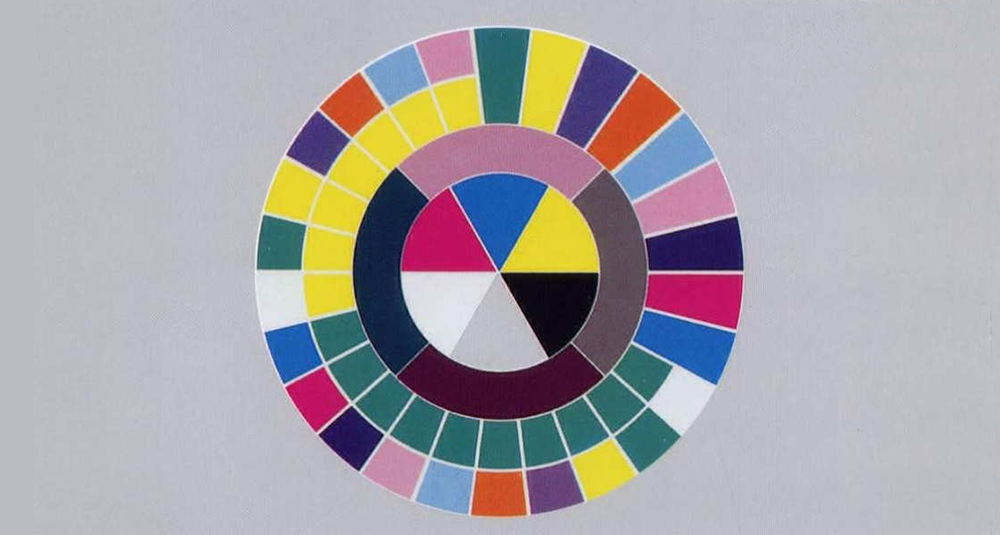
“In October 82 we headed down to London to start recording” said Morris, recalling the genesis of the album, “We lived in a flat on Basil St, Kensington, the four of us and Rob. Very handy for the shops. Sadly the studio was in Islington-the other side of town not so handy for that.”
The album was recorded at Britannia Row, a studio that had originally been built by Pink Floyd and a location used by a wide variety of acts, including Kate Bush, The Cult and also New Order’s previous incarnation of Joy Division.
There were also some other intriguing elements of trivia regarding Power, Corruption & Lies via Mr. Morris: “The album’s title is taken from the blurb on the back of an Orwell book-Hooky was reading 1984. There is a tale on the net that it comes from a visit to a German art gallery. But it’s not true. In 1982 I don’t think any of us apart from Gillian spent much time in art Galleries.”
The evening produced a wealth of anecdotes and insight into the various compositions that make up New Order’s classic album. In particular, Stephen Morris’ technical details presented the album in a new light. Take the album’s opening number ‘Age Of Consent’, which stood apart from many of the tracks on Power, Corruption & Lies by being more guitar-orientated. It eschewed the sequencers and drum machines, but still had a fresh, vibrant sound to it. Or as Morris himself summed it up: “Every song we’d ever done was a search for the elusive Fast dancy number. We definitely found it with this one!!!”
“First guitar I ever learned” chimed in Tim Burgess on the album’s opener.
We learned that ‘The Village’ had a title inspired by Patrick McGoohan’s cult TV series The Prisoner. Originally given the working title of ‘New Fast One’, it was also the first song that New Order had penned with more than one sequenced bass line in it. “I pretty much grew up in a Village” added Burgess, “it really resonated with me. The synths are incredible from 1.45 so in your face but not overpowering… then they disappear- my whole, taste in music seemed to change because of this song.”
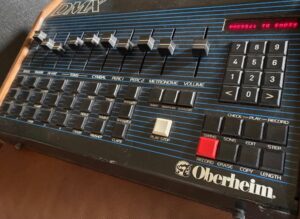
According to Morris, ‘5 8 6’ had been around since the start of 1982. “We originally did it on the old set up of Clef master rhythm Drum box, Powertran sequencer and the Pro-one synth like the ‘Video 586’ and Peel session versions.”
“Recording ‘5 8 6’ We re-did everything on the new gear with the DMX drum machine and the Emulator sampler” recalled Morris, “The Emulator does the choir sounds and I did my best to translate whatever I’d been doing live into the DMX.” Remarking on the Oberheim DMX, Morris also joked “Funky but not particularly stable like most great drummers.”
Meanwhile, Tim Burgess summed up ‘5 8 6’ as “Salford/Macc Prog”.
“All the music for PCL came first, the lyrics second ,It’s always been that way. On ‘5 8 6’ though Bernard had already got most of the lyrics by the time we did the Peel Session version.”
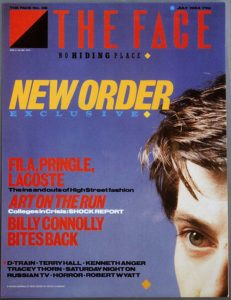
Photographer Kevin Cummins also had some input, particularly with some anecdotes from his time with the band on their US adventures in 1983. “It was chaos” recalled Cummins, “Hooky almost missed a gig. I ended up driving the tour bus & Bernard was generally asleep.”
“The band had a night off prior to their Paradise Garage gig. Ruth [Polsky – Factory’s agent in New York] also ran Danceteria – the best club in NYC. She told us they had someone doing a PA on the roof that evening and we might like it – it was Madonna. Nobody seemed that arsed. there was around 15-20 watching.”
Referring to ‘Your Silent Face’, Morris added: “We’ve always loved Kraftwerk. YSF’s working title was “the Kraftwerk one” (KW1) we were trying to do something like the intro of ‘Europe Endless’. That kind of sparkly sound. Bernard worked really hard getting the synth parts just right.” The composition also makes heavy use of the Korg delay and the Roland space echo – as well as Bernard’s melodica.
“‘Your Silent Face’ soon evolved into something beautiful and majestic- we were afraid we might getting too serious, a problem easily solved by the ‘Why don’t you piss off’ line. You’d never catch Kraftwerk swearing.” In its early instrumental incarnations, ‘Your Silent Face’ was apparently “More guitary, more Morricone spaghetti western than Kraftwerk”.
The influences for ‘Ultraviolence’ apparently were lurking around long before any musical concept emerged: “We had the title for this one before we even had the idea for the song. We had a cassette of the Clockwork Orange soundtrack. That got played a lot on the way to gigs. A big influence of some of sounds on PCL.”
“With the drums on ‘Ultraviolence’ I was trying to do something like Beefheart’s ‘Floppy Boot Stomp’ off Bat Chain Puller – A dark swampy kind of beat.”
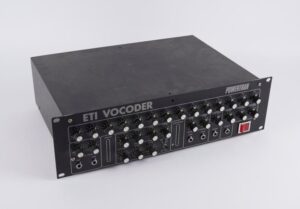
“We had two interesting instrumentals – ‘Murder’ and ‘Ecstacy’ on which Bernard possibly inspired by Giorgio Moroder’s ‘E=MC²’ – pulled out his freshly built box of tricks the Powertran ETI vocoder- for singing through. We should have been sponsored by Powertran!!”
‘Murder’ was under consideration for inclusion on the album, “But democracy won the day” according to Morris, “and ‘Murder’ was shelved until ‘Thieves Like Us’ was done the following year.”
The album closes out with ‘Leave Me Alone’, a track that was apparently “the first idea we wrote of the batch that made PCL“.
“The album’s only completely synth-less track, Hooky’s ace bass riff and Bernard and Gillian doing what they used to call trading licks on the guitar. I think it’s a really emotional song.”
“I really like the way that PCL is bracketed by the two most guitary songs Age of Consent and this one. This song is a personal favourite of mine I’ve got to say.”
Not content with ending the listening party there, Morris also encouraged listeners to fire up ‘Blue Monday’ (“Title inspired by Kurt Vonnegut’s Breakfast of Champions”). Originally conceived as an automated encore for live gigs, the song had been inspired by a melting pot of musical influences – most of which had been absorbed by the band frequenting aforementioned New York dance club scene. Analysis of the track reveals the beat from ‘Our Love’ by Donna Summer, the arrangement from Italo-disco song ‘Dirty Talk’ by Klein & MBO and the baseline of ‘(You Make Me Feel) Might Real’ by Sylvester. There’s even a sample from ‘Uranium’ by Kraftrwerk for good measure.
Evolving from its rigid encore roots, ‘Blue Monday’ became something else entirely: “Bernard started singing on it and Hooky did the signature spaghetti western bass. Rob would rave about this track although I don’t think the rest of us could quite see why. It was really hard work to write!”
‘Blue Monday’ swiftly became one of the most iconic electropop compositions on its release back in 1983. The single’s unusual design, which was conceived as die-cut floppy disc, was conjured up by Peter Saville and Brett Wickens (sleeves that were so expensive to manufacture, the band initially lost money on every copy sold).
The legacy of ‘Blue Monday’ continues today, particularly its recent use to soundtrack the trailer for Wonder Woman 1984, a suitably apt track for the period setting of the film.
Morris summed ‘Blue Monday’ during the listening party with a succinct line: “A song that isn’t really a song more a machine that makes you dance.”
After we left the studio Bernard claimed Blue Monday would be impossible to play live.
But we did AND we cut it down for our “singing live playing live” Top of the Pop debut…”great tv” was how Tony Wilson described it??#timstwitterlisteningparties— stephen morris (@stephenpdmorris) April 12, 2020
The listening party helped to re-evaluate Power, Corruption & Lies as an album that still sounds surprisingly modern and fresh. At the same time, it served as a reminder of how important New Order were during a fervent period of electronic music.
Meanwhile, the enthusiasm expressed during the Twitter session looks likely to be repeated with a follow-up for another New Order album in the near future.
http://www.neworder.com/
https://timstwitterlisteningparty.com/
https://twitter.com/Tim_Burgess
Tim’s Twitter Listening Party will be listening to OMD’s Architecture & Morality Tuesday 14th April from 9pm.


